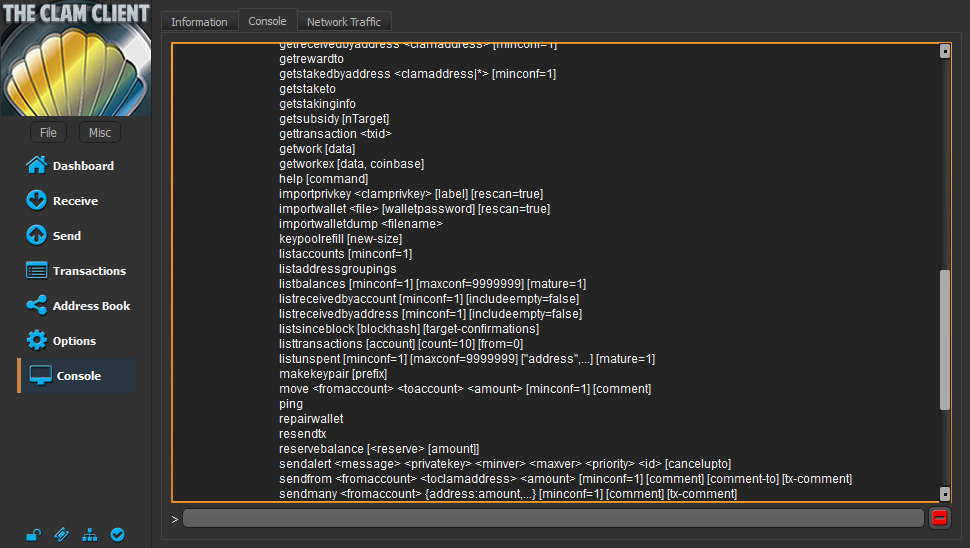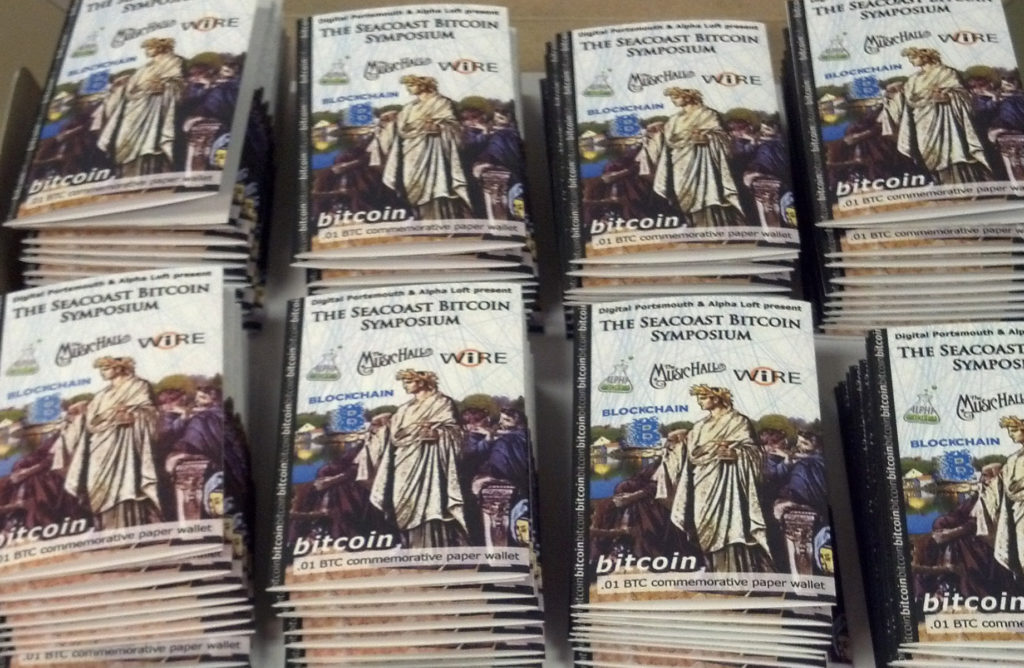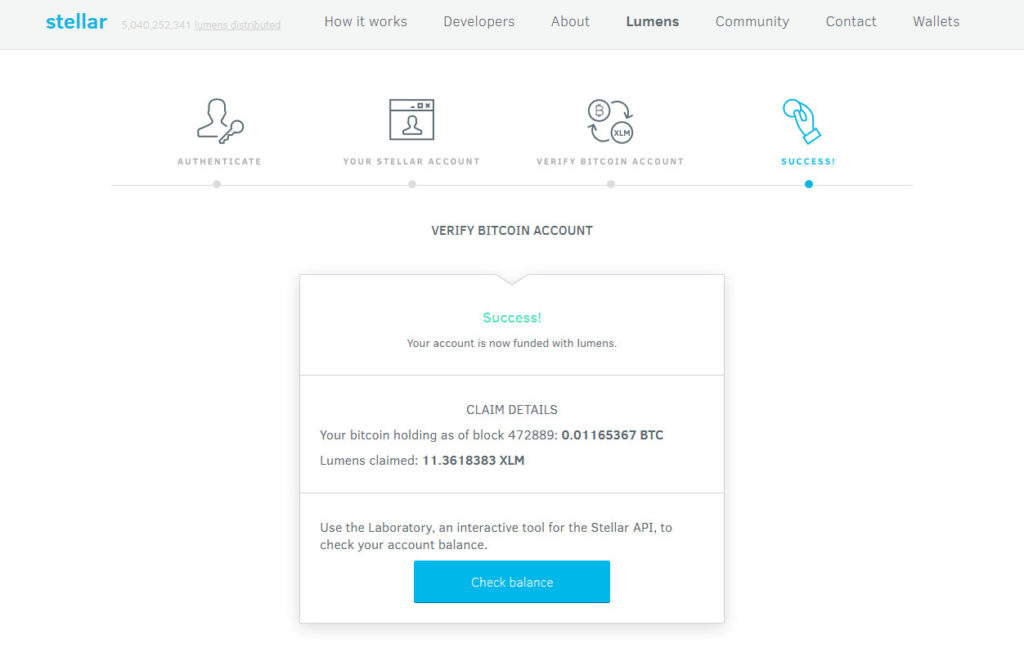It’s very difficult to stay on top of everything going on in the cryptocurrency space, especially when altcoins number in the hundreds. Still, it’s embarrassing to completely miss something big and fun — unless it’s not, because you end up getting to have even more fun later on.
I’d noticed CLAMs listed on exchanges, but didn’t pay any attention to them, because I figured: silly name, silly coin. Who has time?
What I didn’t know was the spectacular distribution method that they had chosen: instead of pre-mining, or doing a crowdsale, or requiring expensive mining equipment to unlock blocks of coins, CLAMs were simply given away. And not only were they given away, they were given away in the widest, most equitable distribution ever: on May 12, 2014, every single Bitcoin, Litecoin or Dogecoin address in existence carrying a balance greater than dust received CLAMs.
How many? Instead of weighting the distribution according to how much of a given cryptocurrency one held, instead every address carrying a balance received exactly the same amount, their share of the 14 million CLAMs initially distributed. Whether you had 100 BTC or .001 BTC at an address on May 12, 2014, you received the same amount of CLAMs as everyone else: 4.60545574.
Why would they do this? Beyond being ridiculously fun, it does ensure involvement by the crypto community since every early adopter was automatically a part of the CLAM community.
If this all still seems like the behavior of a silly coin, conjured out of thin air and given away for free, consider that over the past few weeks, CLAMs have traded at between .0018-0027 BTC, or roughly $4-6 each, which means that every one of those addresses active on that day in 2014 is worth $20-30, even if there is not one satoshi left on it.

The process of hunting for these old addresses and capturing the CLAMs is called, of course, digging for CLAMs. I tried to figure out all the addresses that I might have had active at that time: a few different wallets; a bunch of miners, all pointed to different addresses; some collectible cards and coins which I have since redeemed, but which, miraculously, I have saved the keys to; other things, too. A spreadsheet was called for, and so my journey began.
An address can be quickly checked to see if it has CLAMs by using the tool at https://freebitcoins.com/clamchecker/dig/. If it doesn’t have any CLAMs, move on, otherwise the next step is to import the private key. They offer a tool there to import individual keys and automatically convert the CLAMs to BTC, or to dig whole wallet files at once. Of course, one should never hand over one’s private keys to any strange website or to anyone ever, but these are addresses from 3 years ago, and are for the most part defunct anyway.
It was much more appealing, though, to import CLAMs directly into the CLAM Client. Syncing it up was nightmarish — after a week and half, it was still more than 2 years behind. I’d seen references to dooglus’s bootstrap.dat file speeding things up, but I got confused because the post was from 2014 — that won’t help me much, I thought. That’s what I get for not reading more carefully — the post might have still had a 2014 date on it, but he updates it regularly so the file was actually only a few weeks old. Once I downloaded that, it only took another day or two for the client to import it and catch up.
I fired up my old, pre-HD version of Multibit and exported the keys, then loaded them in; that was a few CLAMs. My Blockchain.info wallet was pretty straightforward, and again it was just a question of exporting the keys for my old, non-HD addresses, then importing them one at a time using the “importprivkey” command at the console.
For Electrum I had to sort though the long list of used addresses and find the ones that were in use at that time, then find the corresponding change addresses for that period as well. It was a lot of digging, but worth it. Even an address that might have only held a tiny amount of BTC at the time yielded the same 4.6 CLAMs.
Then it was on to redeemed coins, cards, DIY coins and paper wallets that I might have been using at the time. Why did I save old homemade paper wallets that have been empty for years? Now I know why. Old BIP38 wallets? Just decrypt them using btcaddress-alpha.
I spent an entire day digging for CLAMs. It was a fine day at the beach.
One fun side effect involves a series of paper wallets myself and a friend had once given away. On March 20, 2014 we’d co-hosted and spoken at an event called “The Seacoast Bitcoin Symposium” in an effort to raise awareness, educate and answer questions. Blockchain.info had donated exactly 1 BTC to be given away to attendees, so the first 100 people got a custom-made paper wallet loaded with .01 BTC. As part of the evening, we explained how to use the wallets.
Not only is the ~$6 worth of BTC (at the time) now worth upwards of $20, but since many of those wallets were still unredeemed a few weeks later, they have CLAMs on them, too, so all of those first 100 people received something like $50 just for showing up to learn something.
And who knows what they’ll be worth in the future?

From the shore to the heavens
CLAMs were a blast from the past, but Stellar is very much a part of the present.
Stellar is a system meant to connect other financial systems together (not unlike Ripple), as well as providing very fast confirmation times. Launched in 2014, they promise to give away 95% of all the lumens (the Stellar token, XLM) created when the network began. They already had one mass distribution to BTC holders in 2016, and they recently initiated another. On June 26, 2017, they took a snapshot of the Bitcoin blockchain and made 16 billion lumens available to bitcoin holders.
Unlike CLAMs, the lumens are allocated in proportion to the bitcoin held at a rate that ends up being just under 1000 XLM/BTC held. Also unlike CLAMs, the lumens aren’t attached to the BTC forever. Instead, there’s a redemption process, whereby BTC holders go to a redemption page, login with Facebook (an unfortunate step meant to ensure that users aren’t in non-crypto zones such as Iran or Connecticut), then submit their Stellar address to receive lumens at, then the BTC address they would like to redeem from.
Fortunately, no private keys are compromised in this process, since Stellar then asks users to sign a brief message with the BTC address they are submitting in order to verify ownership. This is easier in some wallets than in others.

It’s dead simple in Electrum and the Blockchain.info wallet, since users may simply select an address and sign a message with it. The resulting “signature” text, when pasted back into the redemption page, almost instantly releases lumens to the user’s specified wallet.
The Trezor web wallet also works fine for signing messages, but it can be tricky to figure out which of your addresses was actually holding BTC at the time of the snapshot. I ended up looking up individual addresses on a block explorer first.
For the Ledger Nano S, I found the easiest thing was to connect it to Electrum. This then readily displayed all my addresses, showed which ones had balances, and then let me sign from them just by right-clicking on the address and then verifying the action with a button push on the Nano.
For a BIP38 paper wallet, I opted to decrypt the wallet first, then import the key into my Blockchain.info wallet and sign from there, then deleting the key out of the wallet when done. I am not sure if there might be a better way. This was the only instance where I had to move a key around.
A number of exchanges have promised to pass the appropriate lumens along to the bitcoin holders on the exchange, but not all of them. We’ll see how that goes.
When all’s said and done, who doesn’t love free stuff?

